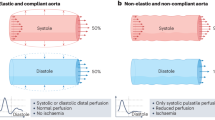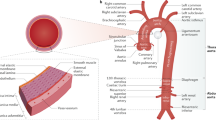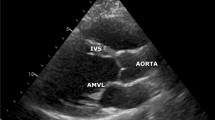Abstract
ANATOMICAL studies have demonstrated the lateral extent of the sinus of Valsalva which has a well defined ridge forming its upper margin, and have indicated that the geometry of the aortic root remains constant between different species. The valve mechanism was studied experimentally using a rigid model of the aortic root which included the coronary arteries.
This is a preview of subscription content, access via your institution
Access options
Subscribe to this journal
Receive 51 print issues and online access
$199.00 per year
only $3.90 per issue
Buy this article
- Purchase on SpringerLink
- Instant access to full article PDF
Prices may be subject to local taxes which are calculated during checkout
Similar content being viewed by others
References
Bellhouse, B. J., and Bellhouse, F. H., Nature, 217, 86 (1968).
Gregg, D. E., Circulation, 37, 1128 (1963).
Author information
Authors and Affiliations
Rights and permissions
About this article
Cite this article
BELLHOUSE, B., BELLHOUSE, F. & REID, K. Fluid Mechanics of the Aortic Root with Application to Coronary Flow. Nature 219, 1059–1061 (1968). https://doi.org/10.1038/2191059a0
Received:
Revised:
Issue date:
DOI: https://doi.org/10.1038/2191059a0
This article is cited by
-
Computer vision-aided bioprinting for bone research
Bone Research (2022)
-
Predilection of Low Protein C-induced Spontaneous Atherothrombosis for the Right Coronary Sinus in Apolipoprotein E deficient mice
Scientific Reports (2018)
-
Pathophysiological coronary and microcirculatory flow alterations in aortic stenosis
Nature Reviews Cardiology (2018)
-
Validation and Extension of a Fluid–Structure Interaction Model of the Healthy Aortic Valve
Cardiovascular Engineering and Technology (2018)



